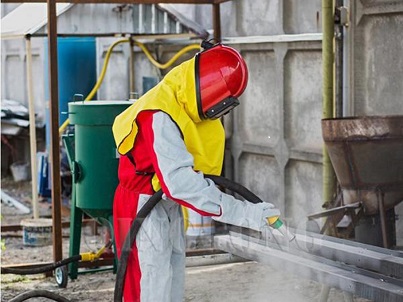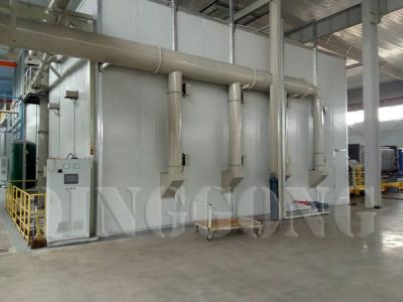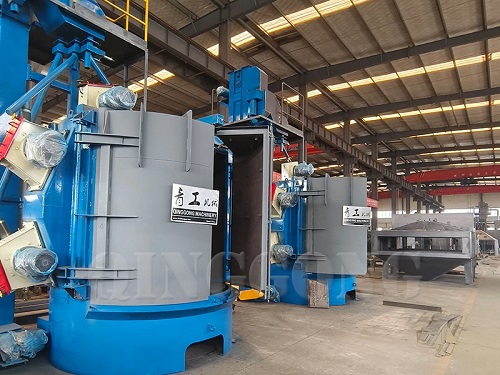Rotary shot blasting machines are widely used in industries such as automotive, aerospace, foundry, and construction, to name a few. These machines play a crucial role in surface preparation and cleaning of various materials. In this blog, we will explore the working principles and mechanisms that make rotary shot blasting machines indispensable in the modern manufacturing world.
Introduction to Rotary Shot Blasting Machines
Rotary shot blasting machines are designed to remove surface contaminants, such as rust, scale, paint, or corrosion, from the surface of a material. This cleaning process not only enhances the appearance of the material but also prepares it for subsequent operations such as coating, painting, or welding. These machines utilize the centrifugal force of abrasive media, propelled by high-speed rotation, to achieve efficient and consistent results.
Working Principles of Rotary Shot Blasting Machines
The working principle of a rotary shot blasting machine involves the following steps:
Loading the Workpiece
The workpiece, which can be anything from small parts to large assemblies, is loaded onto the machine's turntable. The turntable rotates at a predetermined speed, facilitating the movement of the workpiece through the blasting zone.
Abrasive Propulsion
Once the workpiece is in position, the machine's turbine or blast wheel initiates the abrasive propulsion. The blast wheel consists of multiple blades or paddles that spin rapidly, generating centrifugal force. This force hurls abrasive media, such as steel shot or grit, towards the workpiece's surface at high velocity.
Surface Impact
The propelled abrasive media strikes the surface of the workpiece, removing any contaminants or coatings present. The impact of the abrasive media causes a mechanical cleaning action, effectively eradicating dirt, oxidation, or unwanted materials.
Material Collection
As the abrasive media strikes the workpiece's surface, it dislodges contaminants and creates a stream of debris. To prevent the accumulation of these particles, rotary shot blasting machines incorporate an efficient dust collection system. This system captures the dislodged particles and separates them from reusable abrasive media, making the process environmentally friendly and cost-effective.
Mechanisms at Work
To understand the underlying mechanisms of rotary shot blasting machines, it is essential to learn about the key components involved:
Blast Wheel or Turbine
The blast wheel, driven by an electric motor, is responsible for propelling the abrasive media. It primarily comprises blades or paddles that rotate at high speeds. The arrangement and configuration of these blades determine the direction and pattern of abrasive projection, ensuring uniform coverage on the workpiece's surface.
Abrasive Media
Different materials require specific abrasive media to achieve the desired cleaning or surface treatment results. Steel shot or grit are commonly used due to their hardness, recyclability, and ability to remove stubborn contaminants. The type and size of the abrasive media are chosen based on the material being treated and the desired finish.
Dust Collection System
The dust collection system ensures the efficient removal of dislodged particles from the blasting chamber. It comprises a combination of filters, cyclones, and recovery systems that separate the waste material from the reusable abrasive media. By collecting and recycling the media, the system minimizes waste generation and optimizes operational costs.
Benefits of Rotary Shot Blasting Machines
Rotary shot blasting machines offer numerous advantages for various applications, including:
Thorough and consistent cleaning of surfaces
Improved adhesion for subsequent operations, such as coating or painting
Reduced manual labor and increased productivity
Environmentally friendly operations with efficient dust collection systems
Ability to treat a wide range of materials and shapes
Extended equipment lifespan through proper surface preparation and maintenance
In conclusion, rotary shot blasting machines are essential tools for achieving high-quality surface cleaning and preparation in various manufacturing industries. Their working principles and mechanisms enable efficient removal of contaminants and ensure the longevity of treated materials. By utilizing the centrifugal force of abrasive media, these machines offer a cost-effective and environmentally friendly solution for surface treatment needs.
 EN
EN
 fr
fr  de
de  es
es  it
it  ru
ru  pt
pt  ar
ar  th
th  pl
pl  ro
ro 


